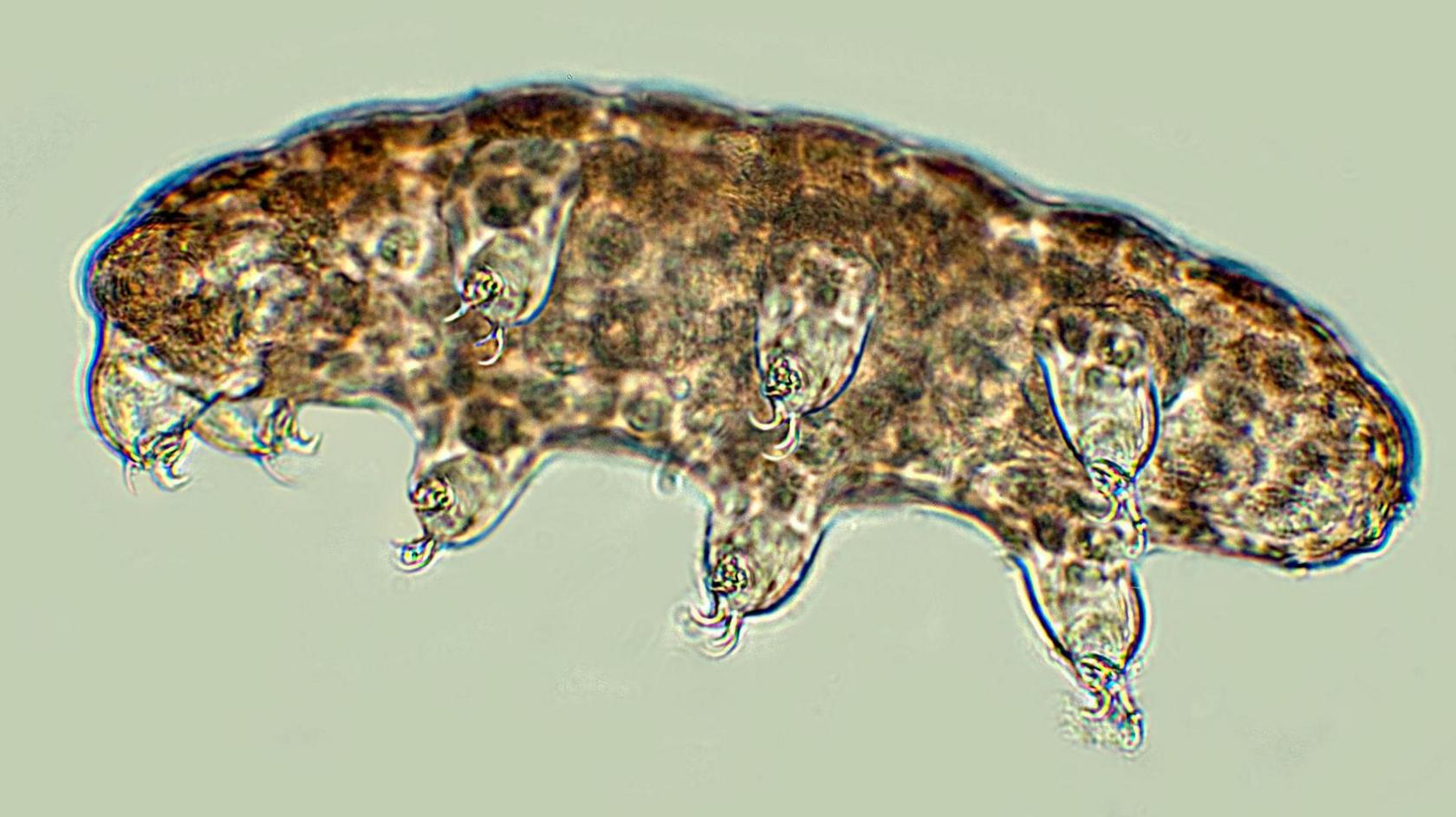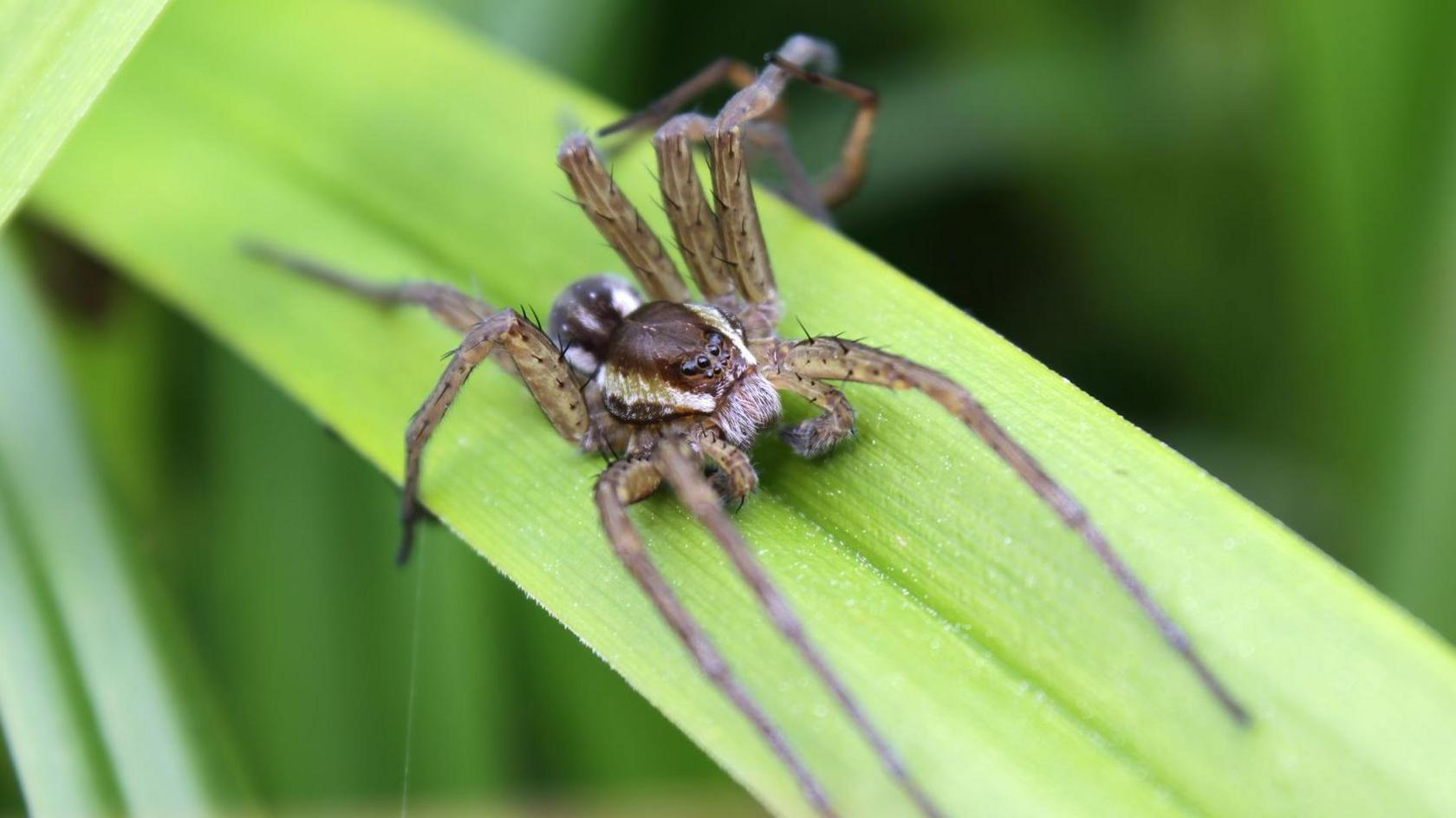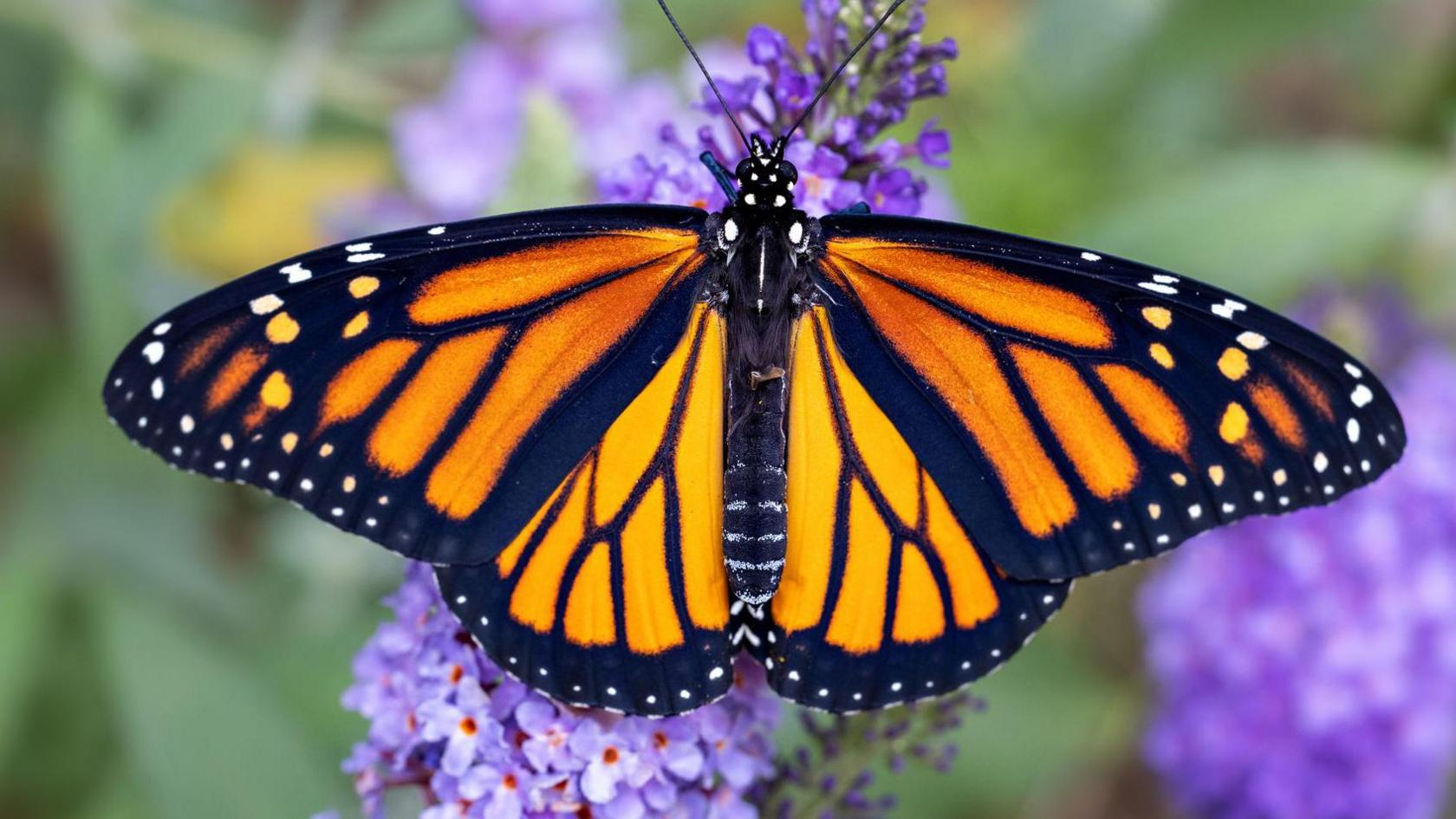Who is the invertebrate of the year?

Here the microscopic life form can be seen swimming in water
- Published
Have you ever heard of a Milnesium tardigradum or tardigrade?
It has just received a very unusual award - invertebrate of the year 2025!
The contest was run by the Guardian newspaper, with readers putting forward more than 2,000 nominations before these were edited down to a shortlist of 10.
A public vote then took place from 2-4 April, and the winner has now been revealed.
Competition organiser Patrick Barkham said that the aim of the competition was "to celebrate the spineless species that make up 95% of animal life on earth".
Last year's winner was the earthworm, who was crowned the first winner of the UK invertebrate of the year in 2024.

This is what a tardigrade looks like under a microscope
An invertebrate is an animal that doesn't have a backbone.
Many invertebrates, like insects and spiders, have a hard outer casing called an exoskeleton, which protects their body a bit like a suit of armour.
The tardigrade, nicknamed the water bear, is incredibly tiny - the size of a speck of dust - but has an extraordinary ability to survive in difficult circumstances.
They often live in aquatic and semi-aquatic habitats such as lichen and damp moss. They are found throughout the world, including regions of extreme temperature, such as hot springs, and extreme pressure, such as deep underwater
Explaining why the tardigrade was a good choice to win, Patrick said: "We are drawn to tiny but resilient animals in times of global political turmoil. When we feel small and powerless, the mighty, microscopic tardigrades give us hope. "

This fen raft spider was also in the shortlist of the top 10 invertebrates
Now a special team of scientists in Cambridge plan to study tardigrades to find out what we can learn from their unique "superpowers".
For example they can survive radiation, by shrinking themselves and completely drying out their cells. Their DNA is then preserved.
In this state they requires no food or water and when they wants to rehydrate again, they can get back to their original state in as little as 25 minutes.
Understanding this process could help researchers make other materials that are resistant to very extreme conditions - maybe vaccines that don't need to be kept in the fridge, or astronauts that can better withstand the radiation in space.
By researching the tardigrades scientists hope they can understand more about how the tiny animals have become so resilient.

This beautiful monarch butterfly was also in the running for top invertebrate - but lost out to the tardigrade!
The shortlist of the final 10 included:
1. The tongue-biting louse burrows in through a fish's gills, clings to its tongue and eats what the fish eats.
2. The dark-edged bee-fly pretends to be a bee but is actually a fly that twerks.
3. Multi-segmented micro-animal Milnesium tardigradum has survived five great extinction events.
4. The flamboyant cuttlefish flashes a dazzling array of psychedelic colours to warn predators they are toxic.
5. The giant Gippsland earthworm can grow up to 3 metres in length.
6. The all-female microscopic common rotifer has thrived without males for millions of years.
7. The fen raft spider walks on water and has been revived from near-extinction in Britain.
8. The ultra-rare amber comet firefly emits a burning flash of light, following by a trailing glow.
9. The Wētāpunga is a flightless grasshopper that's the heaviest insect in the world.
10. The monarch butterfly migrates for 3,000 miles.
